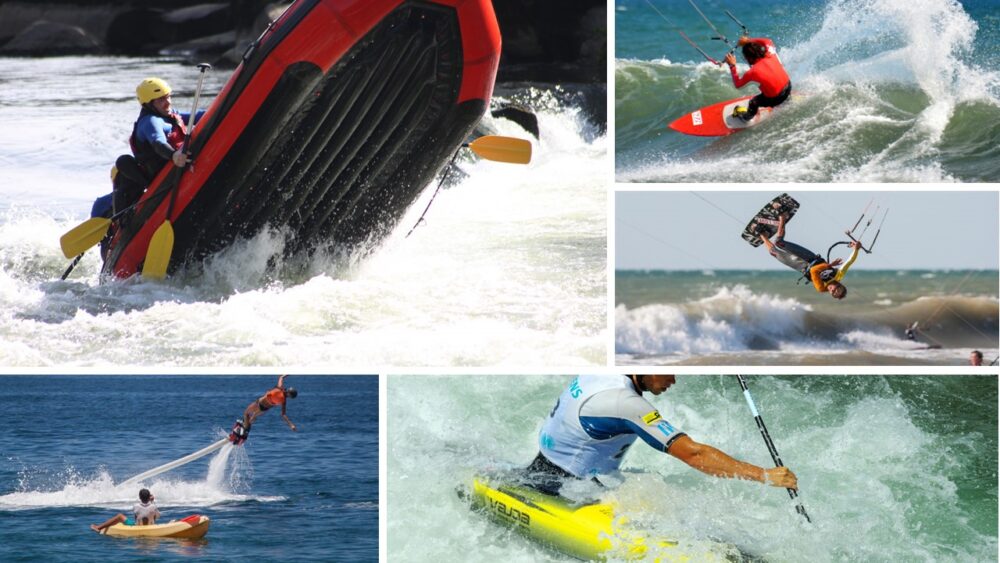What Are Water Sports: Get The Truth And Expert Tips
Curious about “What are water sports”? These aquatic adventures encompass a thrilling world of activities that unfold on the waves, beneath the surface, and in serene bodies of water.
Water sports offer a diverse tapestry of experiences that cater to all interests and skill levels, from heart-pounding extreme sports to leisurely pursuits that soothe the soul.
In this article, we’ll dive deep into the world of water sports, exploring the various types that grace our oceans, lakes, and rivers. Discover the health benefits of these activities, learn about the essential gear required, and find guidance on choosing the right water sport for you.
What Are Water Sports
Water sports, a captivating realm of aquatic pursuits, encompass a diverse range of activities that unfold on lakes, rivers, and oceans across the globe.
The popularity of water sports is a testament to their universal allure, drawing enthusiasts seeking excitement, relaxation, and a connection with the natural elements.
The magnetic appeal of water-based activities lies in their ability to provide a unique and immersive experience. Whether it’s the thrill of mastering the surf, the tranquility of gliding along peaceful waters, or the joy of exploring underwater realms, water sports offer a break from the ordinary.
Beyond the physical challenges, these activities often foster a sense of freedom and a deep connection with nature. The rhythmic lapping of water, the play of sunlight on waves, and the camaraderie formed in group water adventures contribute to the enduring popularity of these engaging pursuits.

Types of Water Sports (What Are Water Sports)
Water sports encompass a vast array of activities, each offering a unique blend of physical challenge, mental engagement, and the pure joy of being immersed in nature’s beauty.
From the exhilarating heights of windsurfing to the serene depths of scuba diving, water sports provide a gateway to a world of adventure and discovery. Here are different types of water sports:
Surface Water Sports
Surface water sports offer an exhilarating blend of speed, agility, and balance, testing the limits of physical prowess and pushing the boundaries of excitement.
These adrenaline-pumping activities captivate those who seek the thrill of riding waves, gliding across the water’s surface, or harnessing the power of the wind.
1. Surfing: Riding the waves on a surfboard, surfing combines skill and balance in the dynamic world of ocean swells.
2. Wakeboarding: Towboarders are pulled behind a boat, riding the wake and performing tricks, blending elements of snowboarding and water skiing.
3. Kayaking: Whether tackling white-water rapids or peacefully paddling on calm waters, kayaking offers a versatile and thrilling water experience.
4. Water Skiing: Being towed behind a boat while standing on skis, water skiing is a classic and exhilarating surface water sport.
5. Paddleboarding: Stand-up paddleboarding involves standing on a large board and using a paddle to navigate, providing a tranquil and full-body workout.
6. Kiteboarding: Combining the elements of surfing and windsurfing, kiteboarders harness the power of the wind to propel themselves across the water, performing aerial tricks and defying gravity.
Underwater Sports
Underwater sports provide a gateway to a hidden world, teeming with marine life and breathtaking natural wonders.
These activities offer a unique perspective on the underwater realm, allowing divers and snorkelers to explore coral reefs, encounter marine creatures, and experience the tranquility of the underwater world.
1. Scuba Diving: Exploring the underwater world with a self-contained breathing apparatus, scuba diving reveals vibrant marine life and stunning ecosystems.
2. Snorkeling: A simpler version of diving, snorkeling allows participants to observe underwater life while floating on the water’s surface with a snorkel and mask.
3. Freediving: Freedivers explore depths without breathing apparatus, relying on breath-holding techniques to descend and ascend.
4. Underwater Hockey: Played at the bottom of a swimming pool, participants use a small puck and a stick to score goals in this unique and challenging sport.
5. Synchronized Swimming: Combining dance and gymnastics in water, synchronized swimming showcases precision, artistic expression, and teamwork.
6. Spearfishing: Combining physical exertion with hunting skills, spearfishers use underwater spears to catch marine fish, requiring precision, timing, and an understanding of the underwater environment.
7. Underwater photography and videography: Capturing the mesmerizing beauty of the underwater world, underwater photographers and videographers navigate the depths of the ocean to document marine life and coral reefs, sharing their underwater adventures with the world.
RELATED: How To Remove Water Spots – A Comprehensive Guide
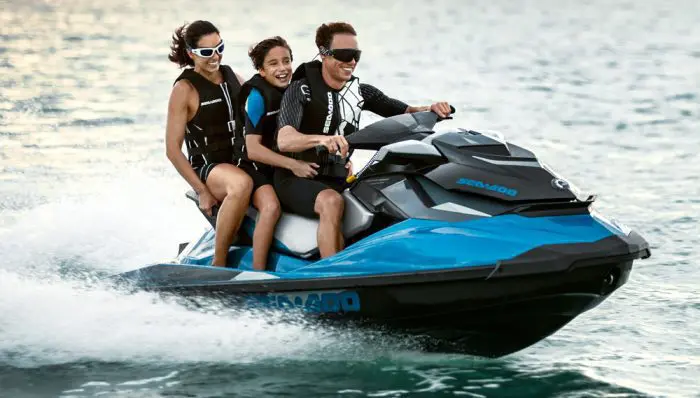
Adventure Water Sports
Adventure water sports are exhilarating activities that combine physical challenge, skill, and a sense of adventure. They offer a unique way to experience the natural world, push your limits, and create unforgettable memories.
1. Jet Skiing: Racing across the water on a motorized personal watercraft, jet skiing provides high-speed thrills.
2. Kiteboarding: Harnessing the power of the wind, kiteboarders use a large kite to propel themselves on a board, blending elements of windsurfing and wakeboarding.
3. Parasailing: Soaring above the water while harnessed to a parachute-like sail, parasailing offers a unique perspective and an adrenaline rush.
4. White-Water Rafting: Navigating through turbulent river waters in an inflatable raft, white-water rafting is an exhilarating team adventure.
5. Kayaking and Canoeing: Paddling through calm waters or navigating rapids and currents, offering a peaceful or adrenaline-pumping experience.
6. Surfing: Riding the waves of the ocean, testing balance, skill, and timing to conquer the power of the sea.
7. Scuba Diving and Snorkelling: Exploring the underwater world, encountering marine life, and discovering the beauty of hidden underwater realms.
8. Windsurfing and Stand-up Paddleboarding (SUP): Harnessing the power of the wind to glide across water, combining balance, technique, and the thrill of riding the wind.
These categorizations showcase the diverse nature of water sports, offering options for thrill-seekers, nature enthusiasts, and those seeking a more leisurely aquatic experience.
Extreme Water Sports: Pushing the Limits of Aquatic Thrills
For those seeking an unparalleled adrenaline rush, extreme water sports offer a realm of exhilarating challenges and mind-boggling maneuvers. These activities push the boundaries of physical prowess, demanding exceptional skill, agility, and a touch of daring.
1. Jet Skiing
Jet skiing, an exhilarating water sport, combines high-speed thrills with agile maneuvering. Riders navigate the water on a small, motorized watercraft, using the power of a jet pump for propulsion. The adrenaline rush in jet skiing comes from the rapid acceleration, sharp turns, and jumps over waves.
Controlling the powerful machine demands a good sense of balance, quick reflexes, and a keen understanding of the water’s dynamics. As riders zip across the water, the thrill of speed and the splashes of spray create an unforgettable experience.
2. Wakeboarding
Wakeboarding takes water sports to new heights, literally. Participants ride a wakeboard, similar to a snowboard, and are towed behind a boat. The challenge lies in carving through the boat’s wake, performing aerial tricks, and mastering spins and flips.
The rush comes not only from the speed but also from the airtime achieved during jumps. Wakeboarding demands a combination of strength, balance, and precise technique.
Whether you’re a beginner mastering the basics or an expert executing complex maneuvers, the adrenaline surge is a constant companion.
3. Kiteboarding
For those seeking the ultimate blend of wind and water, kiteboarding is an unmatched adventure. Participants harness the power of a large kite to propel themselves on a board across the water’s surface. Kiteboarding requires not only mastery of the kite but also skilled board control.
The adrenaline rush in kiteboarding is palpable as riders catch the wind, launching into the air for breathtaking jumps and flips.
Balancing the forces of wind and water while maintaining control over the board demands a high level of skill, making kiteboarding a thrilling challenge for water sports enthusiasts.
In these extreme water sports, the adrenaline rush is inseparable from the skill required to navigate the water with speed, precision, and daring maneuvers.
Whether you choose the speed of jet skiing, the aerial acrobatics of wakeboarding, or the dynamic synergy of wind and waves in kiteboarding, each sport promises an intense and unforgettable aquatic adventure.
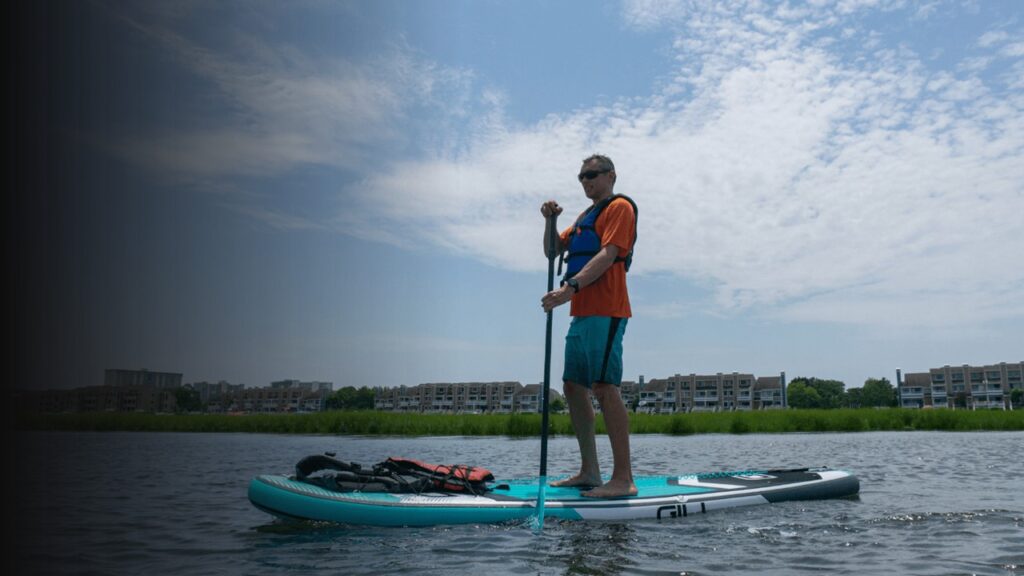
Water Sports for Relaxation (What Are Water Sports)
In the realm of water sports, there exists a tranquil haven, a sanctuary where adrenaline takes a backseat and serenity reigns supreme.
These activities, far from demanding heart-pounding feats, offer a gentle embrace of nature’s calming rhythm, inviting participants to unwind and reconnect with the tranquility of the water world.
1. Paddleboarding
Paddleboarding stands as a serene and meditative water activity, perfectly blending relaxation with gentle exercise. Gliding on calm waters atop a stable board, participants use a paddle to navigate at their own pace.
The rhythmic strokes, the gentle lapping of water against the board, and the panoramic views create a tranquil experience.
Paddleboarding not only promotes balance and core strength but also provides an opportunity for quiet contemplation, making it an ideal water sport for those seeking a peaceful connection with nature.
2. Canoeing
Canoeing embodies the art of unhurried exploration. Drifting along placid rivers or serene lakes in an open canoe, participants are immersed in the soothing sounds of nature. Whether paddling solo or with a companion, the slow and steady pace allows for an appreciation of the surroundings.
Canoeing provides a leisurely escape, where the primary focus is on enjoying the journey rather than reaching a destination. The unhurried nature of canoeing fosters a sense of calm, making it a water sport cherished for its relaxation-inducing qualities.
3. Fishing
For those who find solace in the quiet contemplation of water, fishing is a timeless and calming water activity. Whether casting a line from the shore or a gently rocking boat, fishing invites you to unwind amidst nature’s beauty.
The rhythmic patience of waiting for a bite, the sound of water softly lapping against the boat, and the gentle breeze create a tranquil atmosphere.
Fishing provides not just the thrill of a potential catch but also a therapeutic escape, allowing enthusiasts to disconnect from the hustle and bustle, embracing the soothing embrace of water.
In the realm of water sports for relaxation, paddleboarding, canoeing, and fishing offer a serene counterpoint to adrenaline-fueled activities.
Each of these pursuits invites participants to slow down, savor the moment, and find peace on the water, showcasing the diverse ways in which water activities can contribute to a sense of calm and well-being.
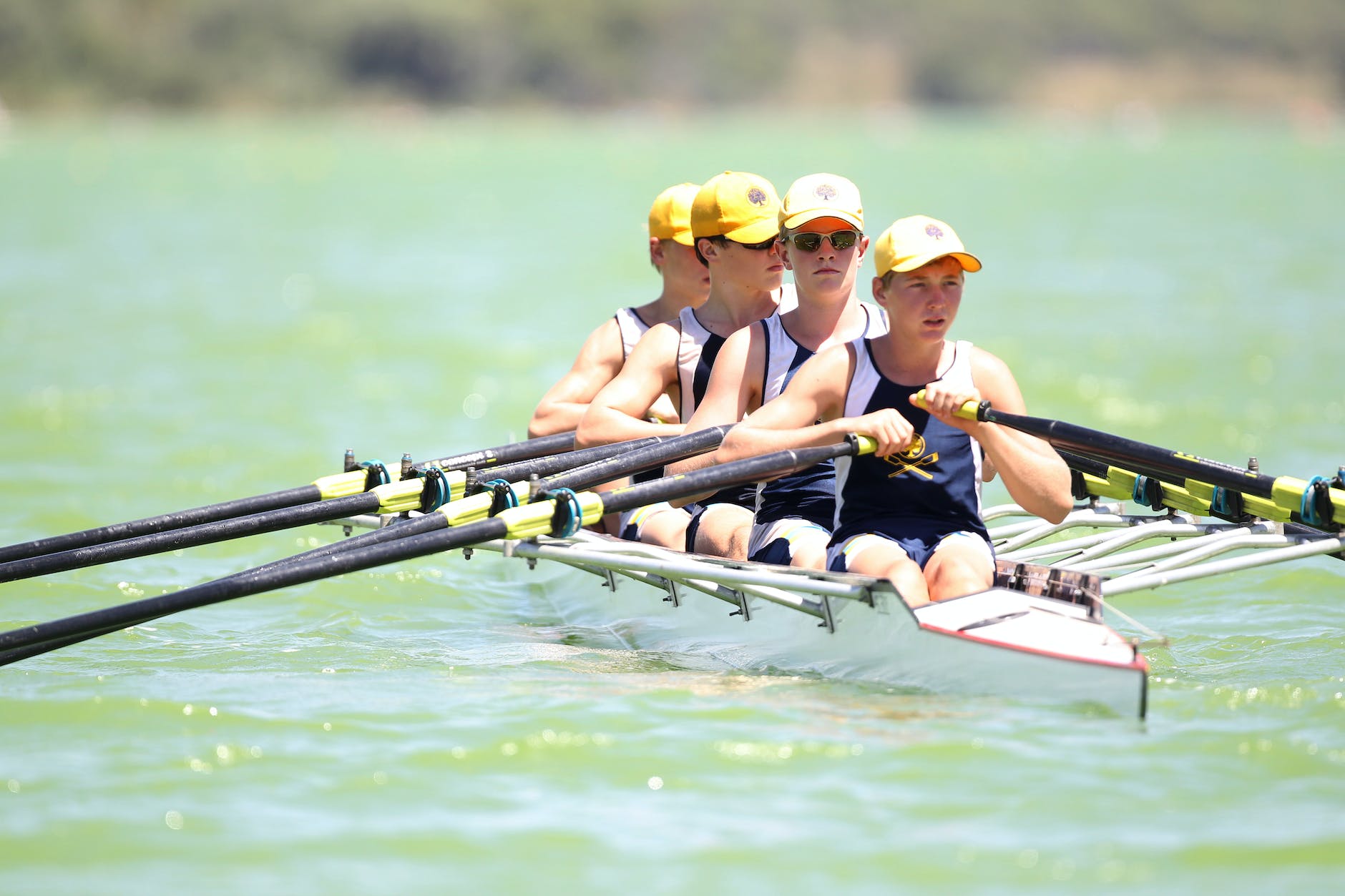
Competitive Water Sports (What Are Water Sports)
In the dynamic arena of water sports, there exists a realm of intense competition and extraordinary feats of athleticism. Competitive water sports elevate these activities to the pinnacle of physical prowess, strategic thinking, and unwavering determination.
From the synchronized strokes of rowing teams to the tactical battles of sailing races, these sports showcase the pinnacle of human performance in the aquatic world.
1. Rowing
Rowing, a sport that demands precision and teamwork, takes place on tranquil waters where teams or individuals propel boats forward using oars. The competitive nature of rowing lies in the synchronization of rowers, the strength required for powerful strokes, and the strategy involved in navigating the course.
Beyond recreational rowing, competitive rowing often involves regattas and races, showcasing the skill and endurance of athletes.
With events ranging from local competitions to prestigious international races like the Olympics, rowing offers a pathway for dedicated individuals to pursue a professional career in the sport.
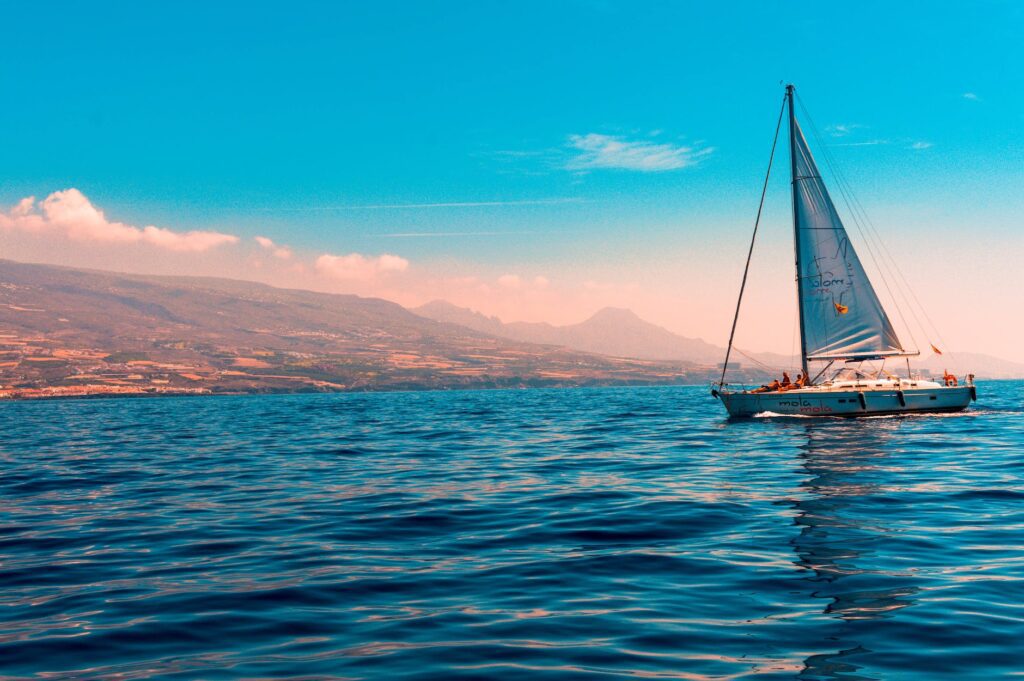
2. Sailing
Sailing is a sport that combines skillful navigation with the unpredictable forces of wind and water. Competitive sailing events range from match racing to fleet racing, where sailors compete to navigate a designated course.
The strategic decisions of when to tack or gybe, coupled with the technical aspects of sail trim, contribute to the competitive nature of the sport.
Sailing competitions, including events like the America’s Cup, attract top-tier sailors and teams, highlighting the potential for professional involvement. The thrill of competitive sailing lies not only in the race itself but also in the mastery of the elements and the pursuit of excellence on the open water.
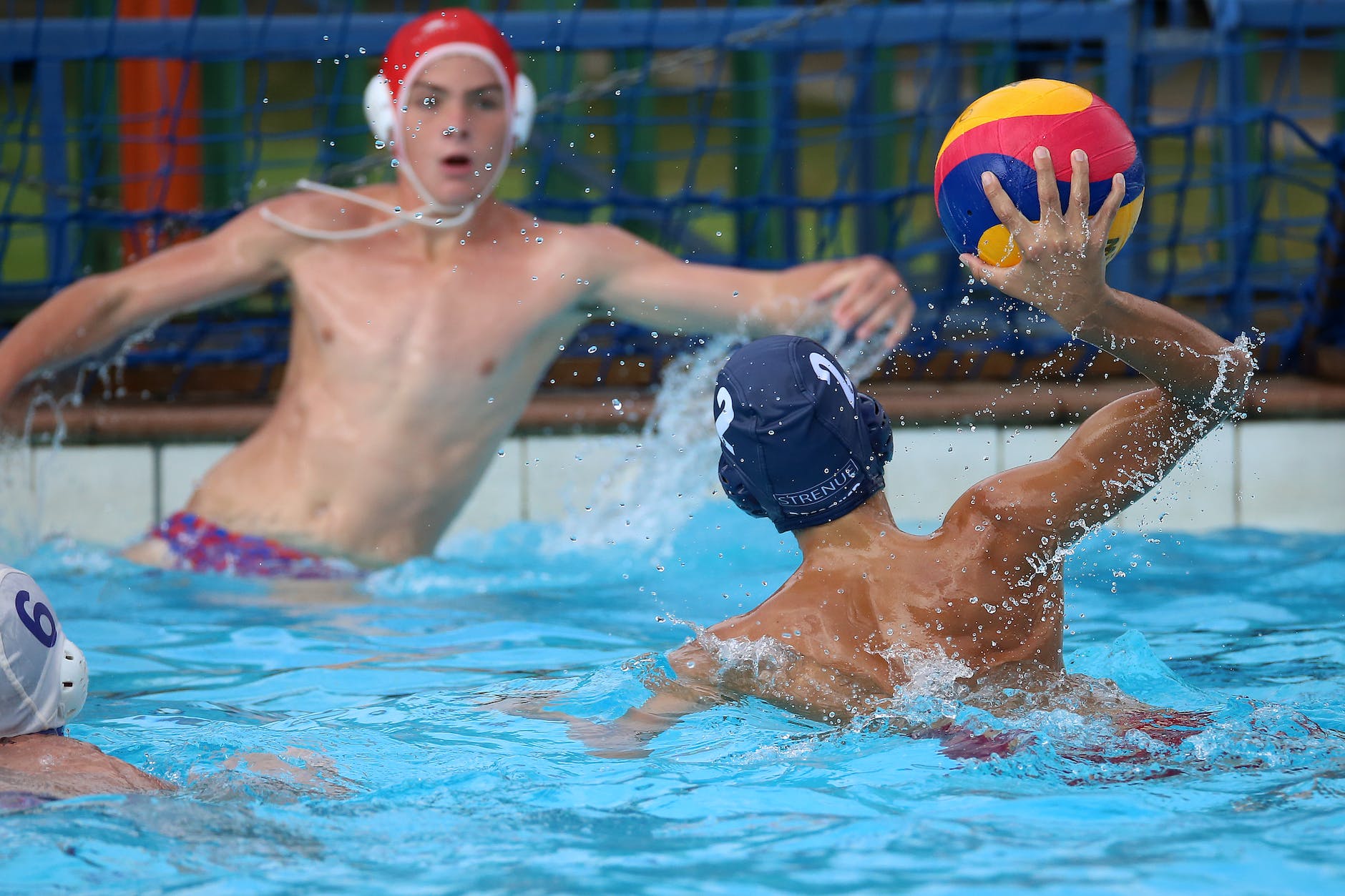
3. Water Polo
Water polo is a dynamic and fast-paced team sport played in a pool, combining elements of swimming, soccer, and basketball. Teams compete to score goals by throwing a ball into the opponent’s net.
The competitive nature of water polo is evident in the physicality of the game, strategic plays, and the need for exceptional swimming and ball-handling skills. Water polo competitions occur at various levels, from local leagues to international tournaments like the FINA Water Polo World Cup.
With a dedicated following and a pathway to professional leagues, water polo offers athletes the chance to excel in a fiercely competitive aquatic environment.
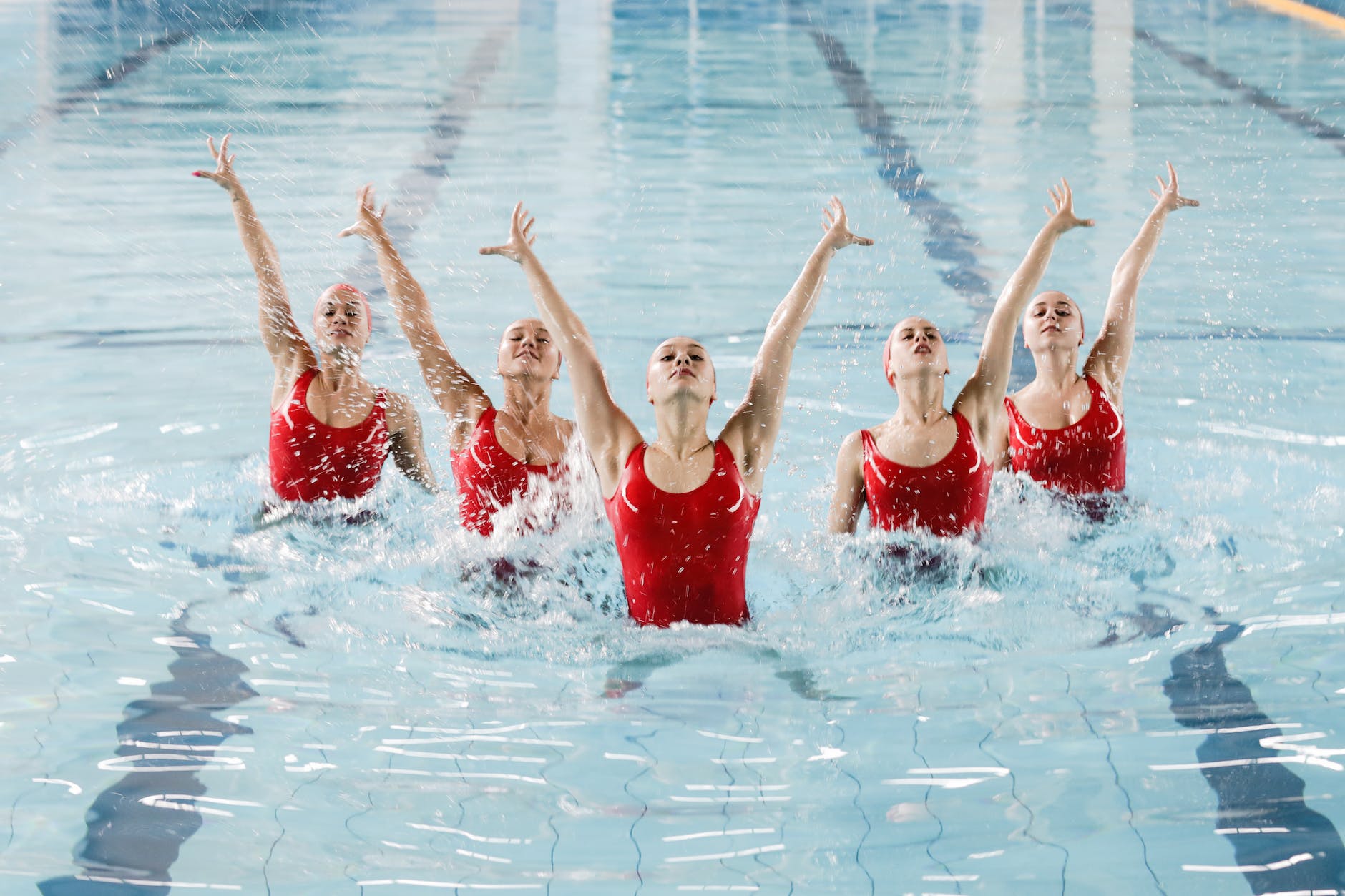
4. Synchronized Swimming
Synchronized swimming, an art form that blends athleticism with artistry, transforms the pool into a stage of captivating grace and precision.
Swimmers, synchronized to music and each other’s movements, execute intricate choreography underwater, their bodies moving in unison, creating mesmerizing patterns and shapes.
The sport demands exceptional physical control, underwater endurance, and an unwavering focus on precision and synchrony.
These competitive water sports, whether it’s the synchronized strokes of rowing, the strategic dance of sailing, or the dynamic intensity of water polo, showcase the diversity of challenges and opportunities within the world of aquatic competition.
For those who aspire to go beyond recreational enjoyment, these sports provide a platform for individuals to pursue excellence, compete at the highest levels, and potentially forge professional careers in the world of competitive water sports.
Health and Fitness Benefits Of Water Sports (What Are Water Sports)
Beyond the thrill and exhilaration they offer, water sports provide a wealth of health and fitness benefits, promoting physical well-being, mental clarity, and overall health.
From the rhythmic strokes of swimming to the exhilarating challenges of surfing, these activities holistically engage the body and mind, fostering a sense of vitality and interconnectedness with nature.
1. Physical Health Benefits
Engaging in water sports offers a multifaceted approach to physical fitness. The resistance provided by water makes activities like swimming, kayaking, and paddleboarding effective full-body workouts. These exercises target various muscle groups, enhancing strength, endurance, and cardiovascular health.
The low-impact nature of water activities is particularly beneficial for individuals with joint issues or those recovering from injuries. Regular participation in water sports contributes to improved stamina, enhanced muscular tone, and overall physical well-being.
2. Flexibility Enhancement
Water’s buoyancy provides a unique environment for improving flexibility. Activities like swimming and water aerobics allow for a wide range of motion without the impact stress experienced on land. The gentle resistance of water encourages the stretching of muscles, promoting flexibility and joint mobility.
As individuals navigate through the water, they engage in movements that enhance flexibility, contributing to better posture, reduced stiffness, and an increased range of motion.
3. Stress Relief And Mental Well-Being
Water sports are renowned for their positive impact on mental health. The rhythmic movements and the calming sound of water create a tranquil environment, fostering relaxation and stress relief.
The immersive nature of water activities promotes mindfulness, allowing individuals to disconnect from the stresses of daily life. The release of endorphins during physical exertion in the water contributes to an improved mood and reduced feelings of anxiety or depression.
Whether it’s the meditative quality of paddling along a serene lake or the invigorating rush of riding the waves, water sports have the power to rejuvenate the mind and elevate overall mental well-being.
4. Weight Management and Cardiovascular Health
Water sports are an excellent form of cardiovascular exercise, promoting heart health and contributing to weight management.
The resistance of water increases the intensity of workouts, burning more calories and promoting efficient fat burning. Swimming, in particular, is a calorie-burning powerhouse, while kayaking and canoeing provide a moderate-intensity workout that engages major muscle groups.
5. Aquatic Rehabilitation and Injury Prevention
Water sports offer a gentle yet effective form of rehabilitation for injuries and musculoskeletal conditions. The buoyancy of water reduces stress on joints and muscles, allowing for controlled movements and promoting healing.
Water aerobics and gentle swimming exercises are often recommended as part of rehabilitation programs, while water-based yoga can improve balance and flexibility.
Water sports provide a holistic approach to health and fitness, engaging the body and mind in a symphony of physical challenge, mental rejuvenation, and overall well-being.
From the invigorating strokes of swimming to the tranquil serenity of paddleboarding, these activities offer a gateway to a healthier, happier, and more connected existence.
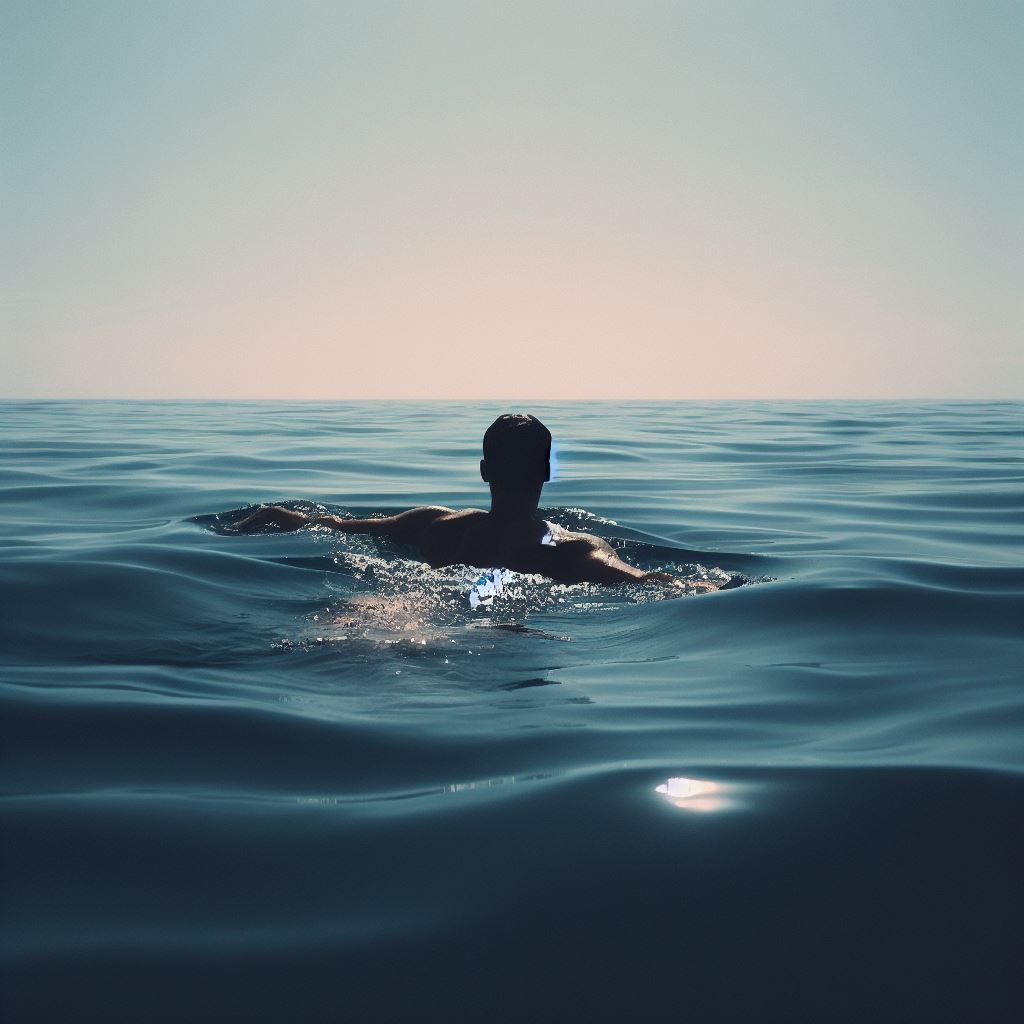
How To Choose The Right Water Sports For You (What Are Water Sports)
The world of water sports offers a diverse and captivating array of activities, each catering to a unique blend of interests, fitness levels, and preferences.
Whether you seek the adrenaline rush of conquering waves, the tranquility of gliding across calm waters, or the challenge of mastering a new skill, there’s a water sport out there waiting to ignite your passion.
1. Interests and Skill Requirements
When selecting a water sport, it’s essential to consider your personal interests and skill level. If you crave an adrenaline rush, consider exhilarating activities like surfing, wakeboarding, or kitesurfing.
For those seeking a more leisurely experience, paddleboarding, kayaking, or canoeing offer a tranquil escape. If you’re drawn to the underwater world, snorkeling or scuba diving will unveil a mesmerizing realm of marine life.
2. Fitness Levels and Accessibility
Water sports offer activities suitable for a wide range of fitness levels. Swimming, for instance, is a versatile workout that can be adapted to various abilities.
Kayaking and canoeing provide a moderate-intensity workout while surfing and windsurfing demand a higher level of fitness and skill. Consider your current fitness level and gradually increase your intensity as you progress.
3. Location and Equipment Availability
The availability of water sports and the necessary equipment often depends on your location. If you live near the ocean, surfing, windsurfing, and kayaking are readily accessible options.
For inland residents, lakes and rivers provide opportunities for swimming, canoeing, and paddleboarding. Check local water sports facilities and rental services to ensure equipment availability.
4. Weather Conditions
Certain water sports, like windsurfing or kiteboarding, are highly dependent on wind conditions. Check local weather patterns and choose activities that align with prevalent conditions for a more enjoyable experience.
Factors to Consider For Water Sports Choice
- Skill Level: Choose an activity that matches your current skill level. If you’re a beginner, consider starting with gentler activities like swimming or paddleboarding before progressing to more challenging ones.
- Physical Fitness: Assess your fitness level and choose an activity that is appropriate for your current condition. If you’re not accustomed to regular exercise, start with low-impact activities and gradually increase your intensity.
- Interests and Preferences: Select an activity that aligns with your personal interests and preferences. If you enjoy the thrill of conquering waves, consider surfing or kitesurfing. If you prefer a more tranquil experience, paddleboarding or canoeing might be a better fit.
- Location and Accessibility: Choose an activity that is readily accessible in your location. If you live near the ocean, consider ocean-based activities like surfing or snorkeling. For inland residents, lake and river-based activities like kayaking or swimming might be more suitable.
- Equipment Availability and Costs: Check for local water sports facilities and rental services to ensure the availability of necessary equipment. Consider the cost of equipment rental or purchase when making your decision.
Essential Water Sports Gear And Equipment
Here’s an overview of the essential gear and equipment needed for different water sports, along with suggestions on where to purchase or rent equipment:
1. Surfing
Gear: Surfboard, leash, wetsuit, surf wax and water shoes.
Where to Get: Surf shops, beachside rental kiosks, and online retailers.
2. Scuba Diving
Gear: Dive mask, snorkel, fins, wetsuit or drysuit, buoyancy control device (BCD), regulator, dive computer.
Where to Get: Dive shops, online dive retailers, and some resorts offer rental equipment.
3. Kayaking
Gear: Kayak, paddle, personal flotation device (PFD), spray skirt (for sit-in kayaks), dry bag and water shoes.
Where to Get: Outdoor retailers, kayak rental facilities, and online stores.
4. Paddleboarding
Gear: Paddleboard, paddle, ankle leash, personal flotation device (PFD).
Where to Get: Paddleboard shops, water sports shops, paddleboard rental companies, and online platforms.
5. Sailing
Gear: Sailboat, sails, life jacket, sailing gloves.
Where to Get: Sailing clubs, boat rental companies, and marine equipment stores.
6. Wakeboarding
Gear: Wakeboard, bindings, life jacket, tow rope and water shoes.
Where to Get: Wakeboard shops, water sports facilities, and online retailers.
7. Snorkeling
Gear: Mask, snorkel, fins, wetsuit or rash guard.
Where to Get: Dive shops, beachside vendors, and many resorts offer snorkeling gear for rent.
8. Fishing
Gear: Fishing rod and reel, fishing line, tackle box, bait, fishing license and water shoes.
Where to Get: Sporting goods stores, specialized fishing shops, and some resorts offer fishing equipment for rent.
10. Jet Skiing
Gear: Personal watercraft (jet ski), life jacket, wetsuit or drysuit and sunscreen.
Where to Get: Jet ski rental facilities, water sports resorts, and some marinas.
11. Water Skiing
Gear: Water skis, tow rope, life jacket.
Where to Get: Water ski shops, water sports rental facilities, and online stores.
Before engaging in any water sport, prioritize safety by wearing appropriate gear and ensuring equipment is in good condition. Purchase gear from reputable retailers or rent from established facilities to ensure quality and reliability.
Additionally, seek guidance from experienced instructors or enthusiasts for proper usage and safety considerations.
Best Water Sport Destinations – Exploring the World’s Best Water Sport Destinations (What Are Water Sports)
The world is a captivating tapestry of diverse landscapes, each offering unique opportunities for water sports enthusiasts.
From the sun-kissed shores of tropical islands to serene lakes nestled amidst towering mountains, the planet provides a myriad of destinations where you can immerse yourself in the thrill and tranquility of aquatic pursuits.
Surf’s Up: Riding the Waves of Paradise
If the allure of conquering waves sets your heart racing, consider these surfing hotspots:
- Hawaii, USA: The birthplace of modern surfing, Hawaii boasts legendary waves, renowned surf spots like Oahu’s North Shore and Maui’s Pe’ahi, and a vibrant surf culture that welcomes novices and seasoned surfers alike.
- Australia: Down Under, surfers can revel in the consistent swells of the Gold Coast, the legendary breaks of Bells Beach, and the world-class waves of Margaret River, home to the annual Margaret River Pro surfing competition.
- Indonesia: Indonesia’s archipelago is a surfer’s paradise, with renowned spots like Bali’s Uluwatu, Lombok’s Desert Point, and the Mentawai Islands, offering a diverse range of waves for all skill levels.
Paddleboarding Nirvana: Gliding Across Serene Waters
For those seeking a more tranquil experience, paddleboarding destinations abound:
- Lake Como, Italy: Nestled amidst the foothills of the Alps, Lake Como offers breathtaking scenery, tranquil waters, and a charming lakeside atmosphere, making it an ideal destination for paddleboarding enthusiasts.
- Hampshire, England: The UK’s Lake District National Park, with its abundance of serene lakes and rivers, provides ample opportunities for leisurely paddleboarding adventures.
- San Juan Islands, USA: This archipelago off the coast of Washington State boasts stunning scenery, protected coves, and a variety of wildlife, making it a haven for kayakers and paddleboarders.
Diving into Underwater Wonders: Exploring the Aquatic Realm
If the underwater world beckons, consider these scuba diving destinations:
- Great Barrier Reef, Australia: The world’s largest coral reef system, the Great Barrier Reef, is a UNESCO World Heritage Site teeming with marine life, offering an unparalleled diving experience.
- Maldives: The Maldives archipelago, with its crystal-clear waters and diverse marine life, including manta rays, turtles, and sharks, is a paradise for scuba divers.
- Raja Ampat, Indonesia: Situated in West Papua, Raja Ampat is home to over 500 species of coral and over 1,500 species of fish, making it a biodiversity hotspot for scuba diving enthusiasts.
Whitewater Rafting: Navigating Thrilling Waterways
For those seeking an adrenaline rush, whitewater rafting destinations offer an unforgettable experience:
- Nepal: Nepal’s rivers, including the Trishuli, Kali Gandaki, and Sun Kosi, provide exhilarating rafting challenges amidst stunning Himalayan scenery.
- Costa Rica: Costa Rica’s lush rainforests and diverse rivers, like the Pacuare and Reventazon, offer a combination of whitewater thrills and breathtaking natural beauty.
- New Zealand: New Zealand’s South Island is home to world-renowned whitewater rivers, including the Kawarau and Shotover, offering adrenaline-pumping rafting experiences.
More Destinations For Water Sports
1. Bali, Indonesia
- Activities: Surfing, snorkeling, scuba diving.
- Notable Spots: Uluwatu and Kuta Beach for surfing, Amed for diving, and Nusa Lembongan for snorkeling with vibrant marine life.
2. Maui, Hawaii, USA
- Activities: Windsurfing, paddleboarding, whale watching.
- Notable Spots: Ho’okipa Beach for windsurfing, Makena Beach State Park for paddleboarding, and Lahaina for whale watching tours.
3. Maldives
- Activities: Snorkeling, diving, water biking.
- Notable Spots: Maaya Thila for diving with sharks, Banana Reef for vibrant coral, and Biyadhoo Island for serene water biking.
4. Queenstown, New Zealand
- Activities: Jet boating, bungee jumping, kayaking.
- Notable Spots: Shotover River for thrilling jet boating, Kawarau River for bungee jumping, and Lake Wakatipu for kayaking.
5. Cancun, Mexico
- Activities: Parasailing, jet skiing, snorkeling.
- Notable Spots: Playa Delfines for parasailing, Nichupté Lagoon for jet skiing, and Isla Mujeres for vibrant snorkeling.
6. The Greek Islands
- Activities: Sailing, windsurfing, kayaking.
- Notable Spots: Santorini for stunning sunsets and sailing, Naxos for windsurfing at Mikri Vigla Beach, and Milos for exploring sea caves by kayak.
7. Cairns, Australia
- Activities: Scuba diving, snorkeling, white-water rafting.
- Notable Spots: Great Barrier Reef for world-class scuba diving and snorkeling, Barron River for white-water rafting adventures.
8. Phuket, Thailand
- Activities: Surfing, paddleboarding, island hopping.
- Notable Spots: Kata Beach for surfing, Ao Thalane for scenic paddleboarding, and Phi Phi Islands for island hopping and snorkeling.
9. Lake Tahoe, USA
- Activities: Kayaking, stand-up paddleboarding, parasailing.
- Notable Spots: Emerald Bay for kayaking, Sand Harbor for paddleboarding, and Zephyr Cove for parasailing.
10. Fiji
- Activities: Snorkeling, surfing, jet skiing.
- Notable Spots: Beqa Lagoon for shark diving, Cloudbreak for world-class surfing, and Denarau Island for jet skiing.
These destinations offer a mix of thrilling and relaxing water activities in stunning natural settings. Whether you’re an adrenaline junkie or seeking a tranquil escape, these water sport hotspots cater to a variety of preferences and skill levels.
Training And Learning Resources For Various Water Sports
If you are a newbie, you definitely need to learn basic skills for your chosen water sports. Here’s a comprehensive list of resources to guide your learning and training in various water sports:
Surfing
- Local surf schools and camps
- Online platforms like YouTube for video tutorials.
Scuba Diving
- PADI (Professional Association of Diving Instructors) and NAUI (National Association of Underwater Instructors) certifications.
- Local dive shops and resorts with diving courses.
- Online platforms like Scuba Diving Magazine’s online learning center.
Kayaking
- American Canoe Association (ACA) courses.
- Local kayak rental facilities often provide basic training.
- Online tutorials on platforms like YouTube or Paddling.com.
Paddleboarding
- SUP (Stand-Up Paddleboarding) schools and rental shops.
- World Paddle Association (WPA) certifications.
- Online tutorials and guides from SUP-specific websites.
Sailing
- American Sailing Association (ASA) and Royal Yachting Association (RYA) sailing courses.
- Local yacht clubs and sailing schools.
- Online sailing courses available on platforms like NauticEd.
Wakeboarding
- Wakeboarding schools and cable parks.
- USA Water Ski & Wake Sports certifications.
- Online tutorials on wakeboarding websites and YouTube channels.
Snorkeling
- Snorkel tours often provide basic training.
- PADI Skin Diver certification.
- Online tutorials on snorkeling techniques and safety.
Fishing
- Local fishing charters with hands-on instruction.
- Online fishing courses and workshops.
- Joining fishing communities or forums for shared knowledge.
Jet Skiing
- Jet ski rental facilities may offer introductory sessions.
- Personal Watercraft Industry Association (PWIA) training courses.
- Online tutorials on jet skiing techniques and safety.
Water Polo
- Local sports clubs, community centers, or schools offering water polo classes.
- USA Water Polo clinics and workshops.
- Online resources for water polo drills and techniques.
Whether you prefer in-person instruction or online learning, there are resources available for individuals at every skill level in various water sports. Always ensure that any certification obtained is recognized by relevant governing bodies to ensure the highest standards of safety and skill development.
Safety Tips for Water Sports
Wear Appropriate Safety Gear
Always wear the necessary safety gear for your chosen water sport, such as life jackets, helmets, or personal flotation devices (PFDs). Ensure they are in good condition and properly fitted.
Get Proper Training
Seek professional training before attempting any water sport. Certified instructors can teach you essential techniques, safety protocols, and proper equipment usage.
Weather Awareness
Check weather conditions before heading out. Avoid water activities during storms or adverse weather. Be mindful of changing conditions while on the water.
Know Your Limits
Understand your skill level and physical capabilities. Don’t attempt advanced maneuvers without proper experience and avoid pushing your limits to prevent accidents.
Buddy System
Whenever possible, engage in water sports with a buddy. Having a companion enhances safety and ensures someone is aware of your situation in case of emergencies.
Regular Equipment Checks
Inspect your gear before each session. Ensure equipment like ropes, life jackets, and inflatable devices is in good working order. Address any issues promptly.
Be Aware of Surroundings
Stay vigilant and aware of your surroundings. Watch for other watercraft, marine life, and potential hazards like rocks or underwater obstacles.
Stay Hydrated
Keep yourself hydrated, especially during physically demanding water sports. Dehydration can affect performance and reaction times.
Follow Local Regulations
Familiarize yourself with and adhere to local water regulations and guidelines. Respect designated swimming areas, speed limits, and specific rules governing water activities.
Emergency Preparedness
Learn basic water rescue and first aid techniques. Carry a communication device, such as a waterproof phone case or marine radio. Have an action plan for emergencies.
By prioritizing safety through proper equipment use, training, and awareness, you can enjoy water sports responsibly and reduce the risk of accidents or injuries. Always stay informed about the specific safety considerations of your chosen water activity.
Is Swimming A Water Sport
Yes, swimming is a water sport. It is a popular and foundational aquatic activity that involves the movement of the body through water using the arms, legs, and sometimes the entire body.
Swimming can be both a recreational activity and a competitive sport, with various styles such as freestyle, backstroke, breaststroke, and butterfly.
Competitive swimming is often organized into events and competitions, including the Olympics, where swimmers showcase their speed, endurance, and technique.
Additionally, swimming is widely recognized for its health and fitness benefits, making it a versatile and accessible water sport for people of all ages and skill levels.
The Bottom Line On What Are Water Sports
The world of water sports is as vast and dynamic as the oceans themselves. From the exhilarating rush of jet skiing to the tranquil embrace of paddleboarding, the answer to “What are water sports” unfolds in a tapestry of experiences waiting to be explored.
So, whether you seek the thrill of the waves or the serenity of still waters, dive in, make a splash, and let the journey into the realm of water sports become your own aquatic adventure.



